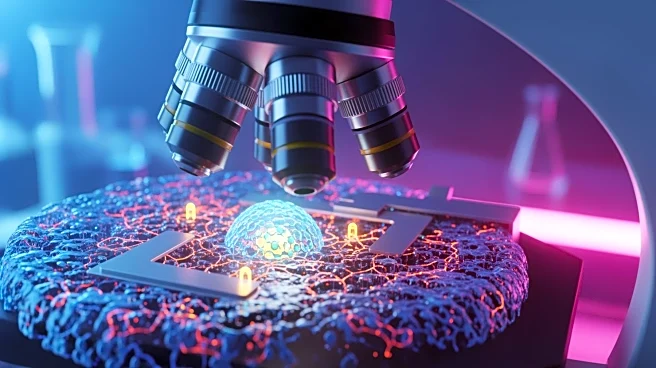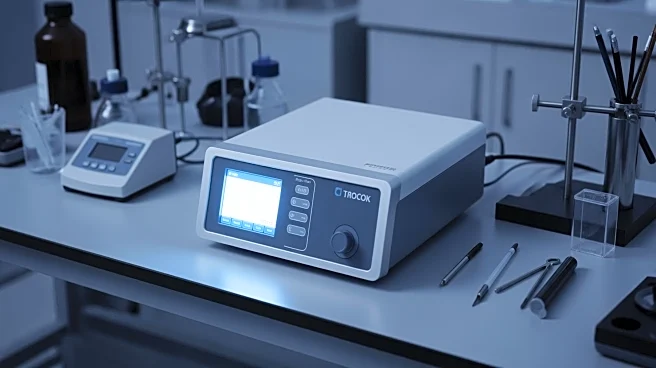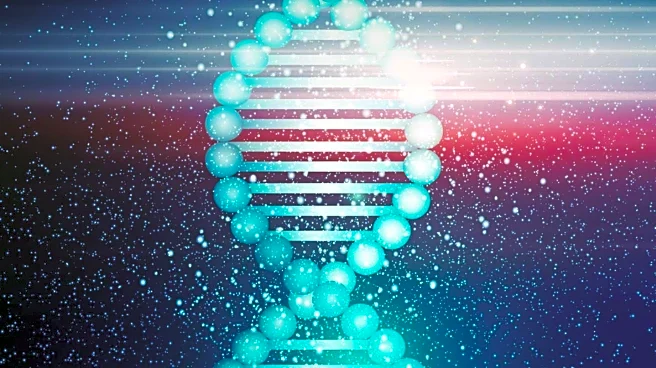What's Happening?
A new strategy for protein mapping in human cells has been introduced by Christian Hackenberger and colleagues, as reported in Nature Chemistry. The technique, known as DarT labelling (deazaflavin–diazirine
energy-transfer labelling), utilizes a small organic molecule called deazaflavin as a photocatalyst. When exposed to blue light, deazaflavin transfers energy to a diazirine probe, creating a reactive carbene that interacts with amino acids with high spatial precision. This method allows for effective tagging of proteins both on the cell surface and inside living cells, achieving nanometre precision. Proteomic analysis using DarT labelling identified over 150 enriched proteins, including adhesion molecules and glycoproteins, demonstrating its efficacy comparable to iridium systems but without associated toxicity.
Why It's Important?
The development of DarT labelling represents a significant advancement in the field of cellular biology and protein mapping. By enabling precise tagging of proteins within living cells, this technique offers new insights into cellular processes and protein interactions. This could have profound implications for understanding diseases at the molecular level, potentially leading to new therapeutic strategies. The ability to map proteins with high precision without disturbing the cell environment is crucial for advancing research in cellular signaling, molecular transport, and genetic information processing.
What's Next?
Future research may focus on expanding the application of DarT labelling to different cell types and tissues, potentially enhancing its utility in various biological and medical research fields. Researchers might also explore the integration of this technique with other imaging technologies to further improve the resolution and accuracy of protein mapping. Additionally, the development of non-toxic alternatives to existing systems could pave the way for safer and more effective research methodologies.
Beyond the Headlines
The introduction of DarT labelling could lead to ethical discussions regarding the manipulation of cellular processes and the potential for unintended consequences in genetic research. As this technology advances, it may also raise questions about the accessibility and regulation of such powerful tools in scientific research.











